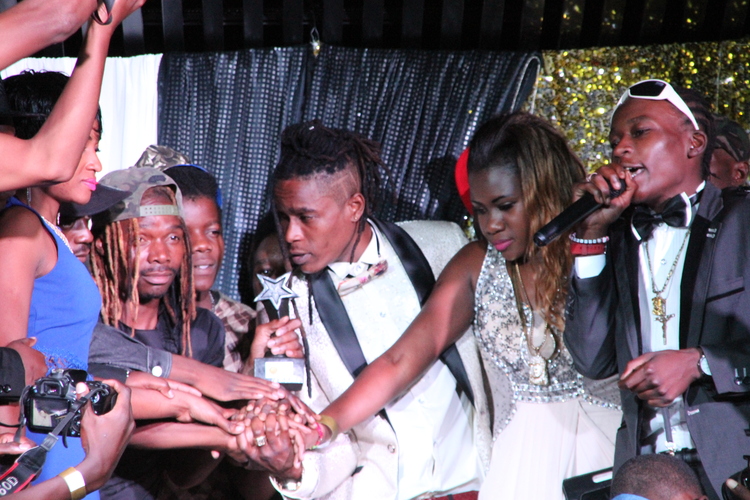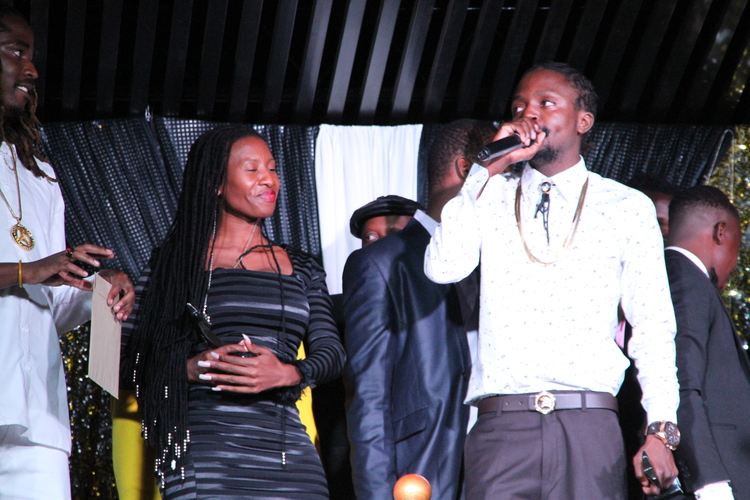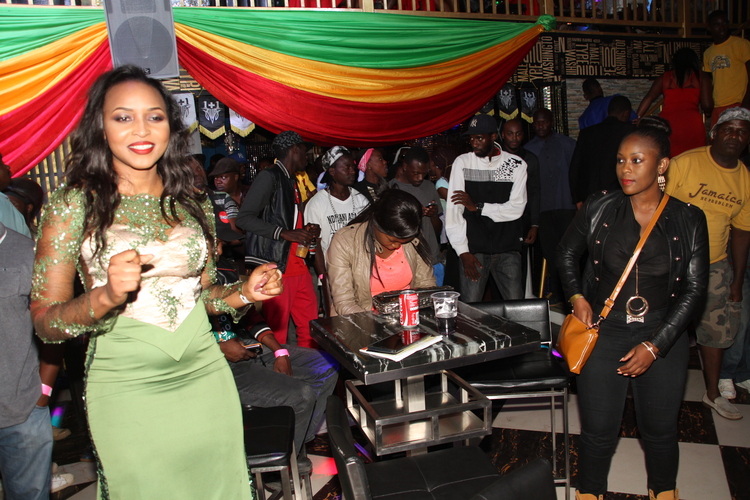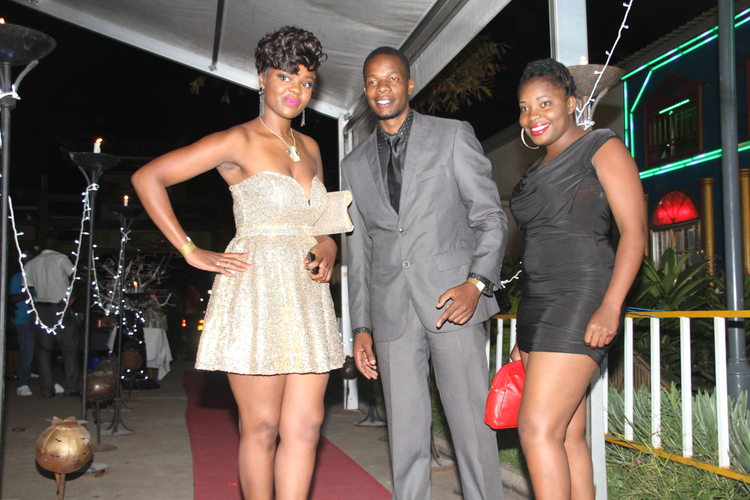
The Sunday Mail

ORGANISERS of the Zim dancehall Awards scaled dizzy heights last week by delivering a near flawless event for the second year running.
For a genre that is generally associated with violence, most people would be pardoned for assuming the awards ceremony is a no-go area, characterised by violence. But that is not the case.

In actual fact, the annual event now in its third year, has gone miles ahead of established awards ceremonies in the country. For instance, they have improved on time keeping and the general handling of the event, including simple issues like separating nominees from the general public.
Just like in the previous edition, the 2016 version held on March 3 at Long Cheng Plaza generated interesting talking points.
From the thunder set by gospel sensation Fungisai Zvakavapano-Mashavave when she made a grand entrance, coming in a plush convertible BMW with four bikers escorting her, Killer T’s awards harvesting, to Winky D’s no show.
Pundits argue that the Gaffer somehow demeaned the function by not attending. Conversely, some say that Winky D’s no show is not issue.

This picture collage shows scenes from the Zim dancehall Awards held recently at the Long Cheng Plaza in the capital. Killer T emerged the biggest winner.
The last school of thought is supported mainly by dancehall enthusiasts who feel that justice finally prevailed when Killer T walked away with four awards in the seven categories that he was nominated in alongside Winky D.

The chairman scooped the Best Artiste 2016 (Male), Best Collaboration with Fungisai for the song “Vanondibatirana”, Best Album for “Ngoma Ndaimba”, and shared Best Social Message with fellow chanter Seh Calaz.
On the other hand, Winky D’s “Disappear” won the Song of the Year award while he was also duly recognised as the Best Performer. Sympathisers feel Killer T aka Chairman was robbed when he lost to Jah Prayzah and Winky D in the Outstanding Male Musician, Outstanding Album and Outstanding song categories at the 2016 National Arts Merit Awards (Nama).
But besides improving their game, organisers of the event still have issues to address.

Matters to do with gender balance and the selection of nominees and subsequently winners remain contentious issues.
For instance, one wonders how Kenako Media could win the Promotion and Mentorship award ahead of Simbarashe Chakari (Bodyslam). Moreover, some question the rationale of having more than a single winner in some of the categories.

Thus, The Sunday Mail Leisure last week interviewed the founder of the event, Phineas Mushayi to get some enlightenment on some of the concerns.
Q: What challenges have you faced in organising the Zim dancehall awards ceremony in the past three years?
A: Because of a depressed economy, it is proving difficult to put together financial resources to hold the event. At the moment, we are financing everything from our coffers but we hope to attract partners in the near future.
Q: Some elements have been trying to discredit the event as biased and not credible, what is your take on that?
A: Awards are always contentious and emotionally charged, making it normal to have people with various opinions on who should win. But what would be the point of having a ceremony that is biased when our vision is to honour the best according to the set criterion. In other countries like South Africa you have different awards ceremonies with different winners in the same category, which goes on to show there is no standard formula in giving out awards. Even here in Zimbabwe, the adjudicators of Nama have a different approach to that of the Zimbabwe Music Awards (Zima), which makes every award ceremony unique to the liking of the organisers.
Q: Equally, they are some that feel Winky D’s failure to attend the event despite having been enthusiastically part of Nama and Zima was a protest gesture. Would you know why the artistes and or his manager failed to come?
A: Winky D and his management have always been forthcoming and heartwarming to the awards because they grasp the importance of having awards to their image. We got prior communication that they would be sending a representative to the awards, and the representative came.
Q: Also, there are some female artistes that argue that they are not getting due recognition from the organisers of the Zim dancehall awards despite their meaningful contribution to the industry. What are you doing to address this anomaly?
A: We feel that is a genuine concern and we will try to solve that anomaly in the next editions. The ladies do make meaningful contributions to the genre even though their numbers are way below those of their male counterparts because of the general societal limits which tend to put in a lot of stumbling blocks on women but they still manage to shine regardless.
Q: Can you explain the rationale of having double winners in some of the categories? Is it not a way of trying to create a balanced outcome?
A: Only two categories out of the 19 had double winners. The first one being the Best Social Message, which we have always given to two winners in the past three years. We deliberately give two artists because we feel this is a category that is a pillar to the image of the genre which was traditionally associated with dirty lyrics. Evidently we have seen a move towards cleaner and more socially responsible lyrics and we feel we have contributed towards this. The other category which had two winners was the Most Promising Artiste. We felt there was very little to separate the eventual winners. We never give awards to balance the outcome but we reward where we feel credit is due.
Q: How did you select your list of nominees and the eventual winners?
A: The nomination process put into consideration the views of various stakeholders behind the genre. These include radio DJs, journalists, producers and the fans. If you follow our Facebook page, you will realise that we asked the fans to suggest the names of artistes they felt should be included on the nominees list and we feel their views pretty much reflected what the fans think and ultimately it’s the views of the fans that really matter. Even on the final selection, we allow the fans to vote on our website and their views are put into consideration together with those of the other stakeholders mentioned above.
Q: What are your overall plans for the event and at the same time, what do you wish to achieve in the long run?
A: The awards are meant to celebrate Zim dancehall artistes. We want the event to pass positive image for the artistes and the genre at large. Most people have negative perceptions about the Zim dancehall artistes compared to artistes from other genres and this is what we wish to correct. The red carpet was fantastic and the artistes were looking awesome, which is our desire. We want to bring a professional look to Zim dancehall. We have genuine love for Zim dancehall and we wish to see corporates coming in to be associated with the brand that has provided a livelihood for scores of youths who would otherwise be unemployed.
We would also like to take this opportunity to congratulate all the nominees for working hard and we hope to see them grow from strength to strength.
Our heartfelt gratitude to corporates that have been behind some of the artistes, providing them with endorsement deals that have managed to transform their lives. Most of all, we would like to thank the newspapers and the radio stations that provide the coverage for Zim dancehall as they are the ultimate interface between the artistes and the fans.



